Accounts Receivable Process: Step-by-Step Guide

Do you also feel like chasing payments is a full-time job on its own?
One moment you’re sending out invoices, and the next you’re sending “gentle reminders” that somehow turn into awkward follow-ups.
Yep, that’s the everyday struggle when the accounts receivable process isn’t under control.
The good news?
It doesn’t have to be this painful. When done right, the accounts receivable process steps make sure invoices don’t go missing, late payments don’t pile up, and cash flow doesn’t feel like a never-ending waiting game.
And suppose you really want to make life easier. In that case, accounts receivable process automation takes away all that manual headache... no more spreadsheets, no more “oops” moments, just faster payments and fewer errors.
In this guide, you’ll find not just the breakdown of the accounts receivable process but also some smart accounts receivable process improvement ideas to help keep things smooth, simple, and maybe even a little fun (because hey, who said finance has to be boring?).
But before diving into the steps, let’s clear up what accounts receivables actually mean, why they matter, and the little hiccups they tend to bring along.
What Are Accounts Receivables Process?
Accounts receivable refers to the amounts customers owe a business for products or services they have received on credit.
These outstanding balances appear on the balance sheet as assets since the business expects to collect the cash in the future.
In short, accounts receivable arise from credit sales: goods or services are delivered, the customer is given time to pay, and the business awaits payment.
Properly managing accounts receivable is essential for maintaining healthy cash flow and turning outstanding balances into actual revenue.
Examples of the Accounts Receivable Process
- When a customer purchases goods or services on credit and agrees to pay later, it becomes an outstanding receivable.
- Unpaid invoices for services that have already been delivered are also considered receivables.
- Aging invoices, such as those 31–60 days past due, are receivables as well; the longer they remain unpaid, the greater the risk they may not be collected.
Because accounts receivable make up a significant part of a company’s financial records, they require careful monitoring.
Failure to manage them properly can lead to overdue payments turning into bad debts, negatively affecting cash flow and overall financial stability.
How to improve accounts receivable process
Improving the accounts receivable process ensures timely payments, healthier cash flow, and reduced risk of bad debts. Here are key steps to enhance the process:
- Review Your Accounts Receivable Process Steps
I know it can get tedious sending invoices and reminders manually. By automating these repetitive tasks, we can save time, reduce errors, and make collections faster. Tools that automate accounts receivable process can really make a difference here. - Accounts receivable process automation
Here’s what you and I can do to improve things:
- Offer multiple payment options to make it easy for your customers.
- Set clear payment terms and make sure everyone knows them upfront.
- Keep an eye on aging invoices so we can follow up before they turn into bigger problems.
3.Train Your Team and Standardize Procedures
It’s not just about tools—it’s about people too. Make sure your team understands the improved accounts receivable workflow process. Standardizing procedures helps reduce mistakes and keeps collections consistent.
4.Use Data to Optimize Collections
Finally, let’s use the numbers to our advantage. By analyzing payment patterns, we can predict delays, prioritize high-risk accounts, and fine-tune your accounts receivable process steps to make collections as smooth as possible.
Accounts Receivable Process Steps
The accounts receivable process ensures that a business collects payments efficiently and maintains healthy cash flow. Key steps include:
- Check Credit First
Before you let a customer buy on credit, make sure they’re good for it. I’d always check their credit history or past payments to avoid surprises. - Send the Invoice
Once you deliver the product or service, send a clear invoice right away. Include payment terms, due dates...everything they need to pay on time. - Make Sure They Get It
Whether it’s email, portal, or good old-fashioned mail, confirm the invoice reaches them. You don’t want it getting lost in the shuffle. - Keep an Eye on Payments
I’d keep track of who’s paid and who hasn’t. A quick check every week saves a ton of headaches later. - Follow Up on Late Payments
If a payment’s overdue, don’t wait. A friendly reminder goes a long way. Trust me, most people just need a nudge. - Reconcile Your Records
Match up your receivable records with your accounting books regularly. It keeps everything clean and accurate. - Look at the Big Picture
Check aging reports and trends. You’ll start seeing patterns...like which customers usually pay late...so you can tweak your process and make it smoother.
Understanding the Accounts Receivable Workflow Process
The accounts receivable workflow process encompasses all activities involved in managing and collecting payments from customers.
It begins when a customer purchases goods or services on credit and continues through invoicing, delivery of the invoice, payment tracking, and follow-up on overdue accounts.
Accurate recording and reconciliation ensure financial records remain up to date, while regular analysis of aging invoices and collection trends helps optimize cash flow.
By streamlining this workflow...often with automation tools, businesses can reduce errors, accelerate collections, and maintain a healthier financial position.
Benefits of Accounts Receivables for a Business
Managing accounts receivable effectively offers several advantages that help a business stay financially healthy:
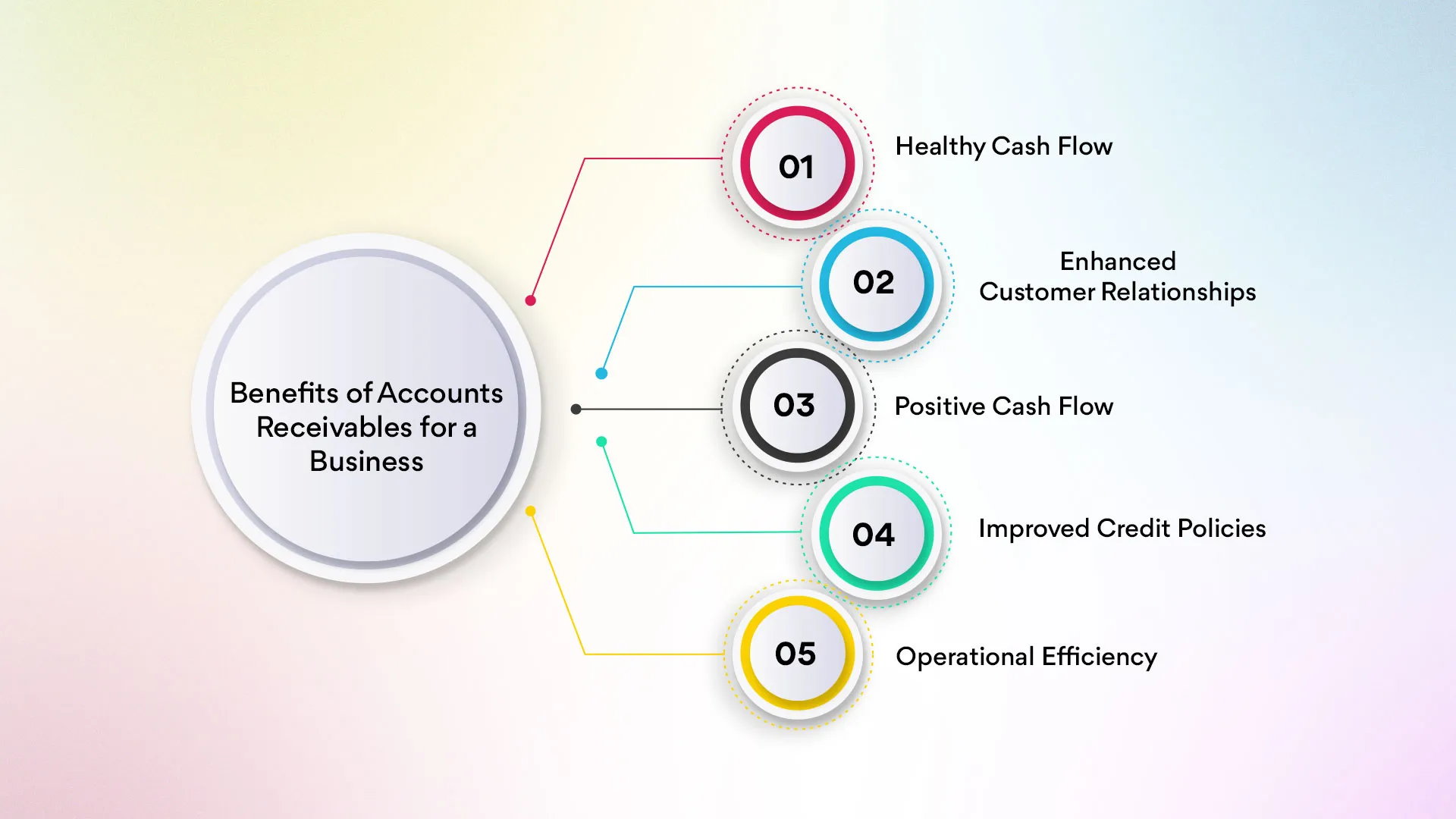
- Healthy Cash Flow: When customers pay on time, you’ve got cash ready to cover operating costs and grab new growth opportunities without sweating about bills.
- In other words, no more late-night worries about your balance sheet looking shaky.
- Enhanced Customer Relationships: Offering flexible payment terms is like giving customers a little breathing space.
- Throw in polite reminders, and suddenly you’re not just collecting payments...you’re building loyalty.
- Positive Cash Flow: A smooth stream of receivables means fewer hiccups in your accounts receivable workflow process.
- Think of it as keeping the financial pipes unclogged so your business keeps running without interruptions.
- Improved Credit Policies: By keeping an eye on who’s paying late and who’s always on time, you can tweak credit terms smartly. It’s like learning which friends you can lend money to and which ones you should probably just say, “nah, cash only.”
- Operational Efficiency: Here’s where it gets fun...when you automate accounts receivable process, you cut down manual tasks, reduce errors, and save time.
- That means fewer spreadsheets, less chasing, and more energy for real work (or coffee breaks, no judgment).
At the end of the day, well-managed receivables aren’t just numbers on a purchase order or the balance sheet...they’re what keep your business financially healthy, flexible, and ready to grow.
The Full Accounts Receivable Cycle (Accounts Receivable Flowchart)
The accounts receivable cycle outlines the steps a business takes to collect payments from customers efficiently. Here’s a professional breakdown of the process, similar to an accounts receivable process flowchart:
- Customer Purchase on Credit
It all starts when a customer buys your product or service on credit. They’ve received what they need, but payment is due later. - Invoice Creation
You generate an invoice detailing the amount, due date, and payment instructions. This step kicks off the collection process. - Invoice Delivery
Send the invoice to your customer via email, online portal, or mail. Make sure it reaches the right person—no lost invoices! - Payment Monitoring
Keep track of outstanding invoices. The goal here is to know who has paid, who hasn’t, and what’s coming up soon. - Follow-Up on Overdue Payments
If a payment is late, send reminders or contact the customer. Timely follow-ups are key to an efficient accounts receivable collection process. - Payment Collection and Recording
Once payment is received, record it in your accounting system and update the customer’s account. - Reconciliation and Reporting
Regularly reconcile your accounts receivable ledger with the general ledger. Analyze trends, check for delays, and adjust your process as needed. - Process Improvement
Review your accounts receivable process flowchart periodically to find areas for automation, efficiency, or faster collections.
Challenges of Accounts Receivables
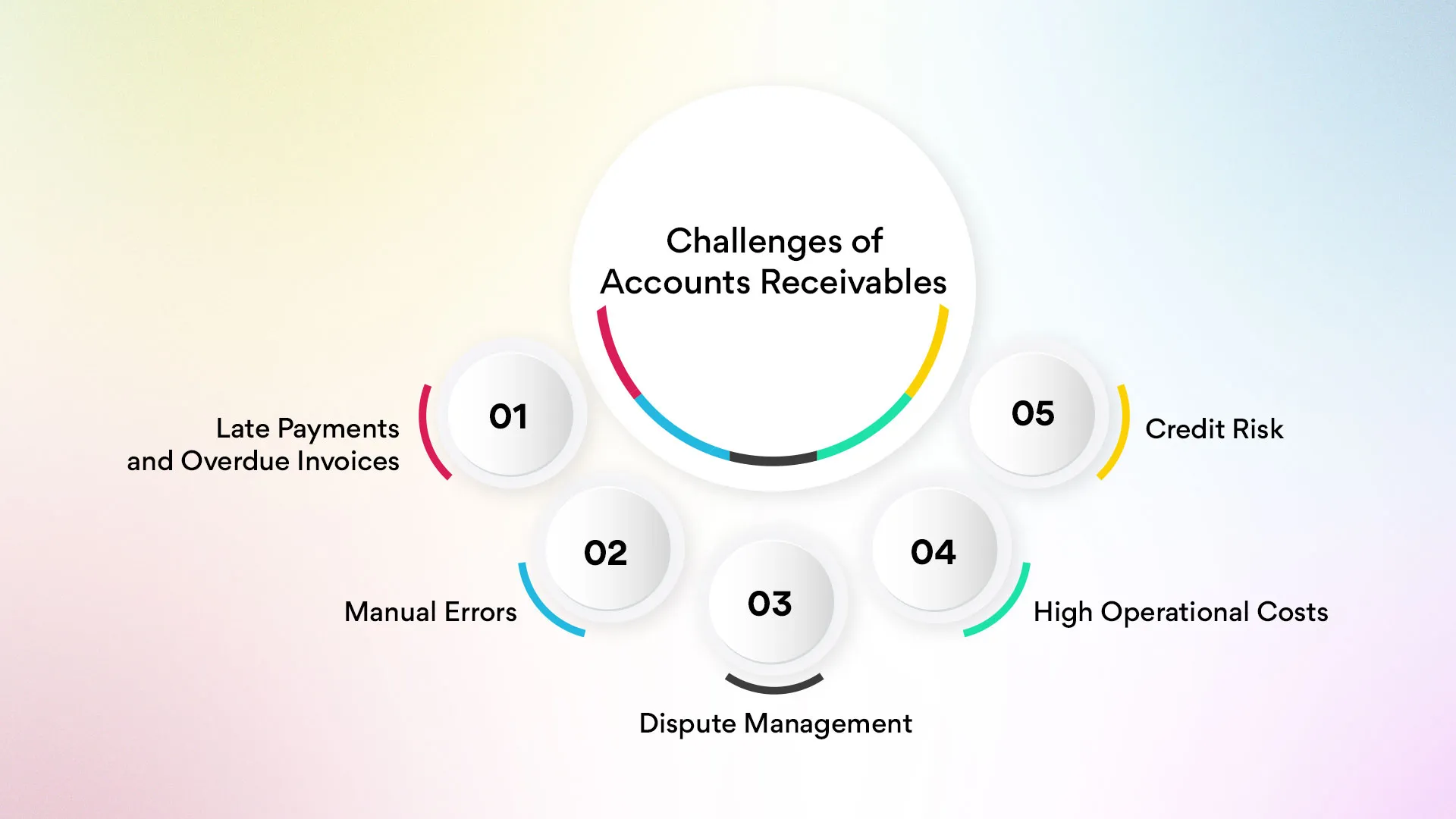
- Late Payments and Overdue Invoices: Delays in customer payments disrupt cash flows and increase the risk of uncollectible debts.
- Companies must implement efficient collection efforts and leverage tools such as payment reminders to deal with outstanding accounts.
- Manual Errors: Human errors in invoice creation or matching can result in inconsistencies in financial records.
- Such errors expose the company to disputes, leading to undesirable results in the receivable workflow.
- Dispute Management: Invoice disputes or disagreements on payment terms can extend the collection process.
- Without appropriate dispute resolution mechanisms, firms could be left with disputed invoices and/or legal problems.
- High Operational Costs: Manual processing for tracking invoices and reminders generates time and labor expenses.
- This leads to decreased overall operational effectiveness and an expansion of costs within the receivables management workflow.
- Credit Risk: Extending credit to customers with poor credit history can lead to unpaid debt and bad debt buildup.
- Adequate credit checks and credit applications are crucial to reduce this risk.
The step-by-step process of accounts receivable entails the following:
1. Credit Application Process
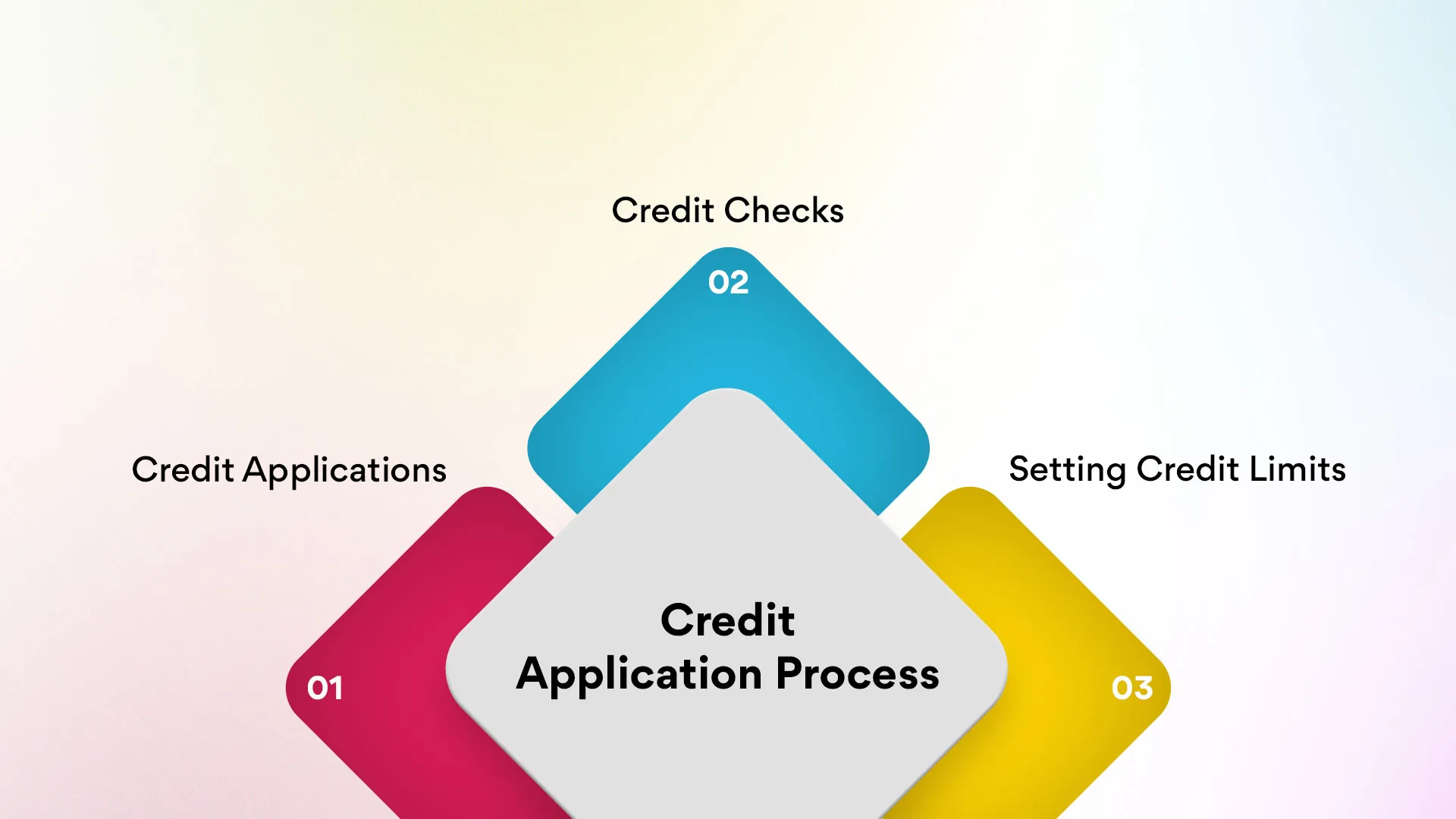
Before extending credit services, businesses must evaluate potential customers’ credit history and risk.
Credit applications, checking credit, and setting credit limits are critical to reducing uncollectible debts.
- Credit Applications: Gather the customer's full financial history, including business references and credit history.
- A complete credit application gives businesses a definitive record of the customer’s financial condition and payment history.
- Credit Checks: Estimate the customers' creditworthiness using financial metrics and business reports.
- Factors such as credit history, days sales outstanding, and average accounts provide insights into the customer’s reliability and reduce the risk of unpaid debts.
- Setting Credit Limits: Define appropriate credit limits based on the risk assessment.
- These bounds help mitigate the risk of uncollectible debts tied to new credit sales.
- They also offset the risks while balancing the opportunities that come with increased sales and promising but unproven salespeople.
How Accounting Software Helps:
- It provides tools to streamline the credit application process by integrating customer financial data and automating credit risk evaluation.
- With real-time reporting, businesses can make informed decisions about setting credit limits and creating effective credit policies.
2. Invoice Creation and Delivery
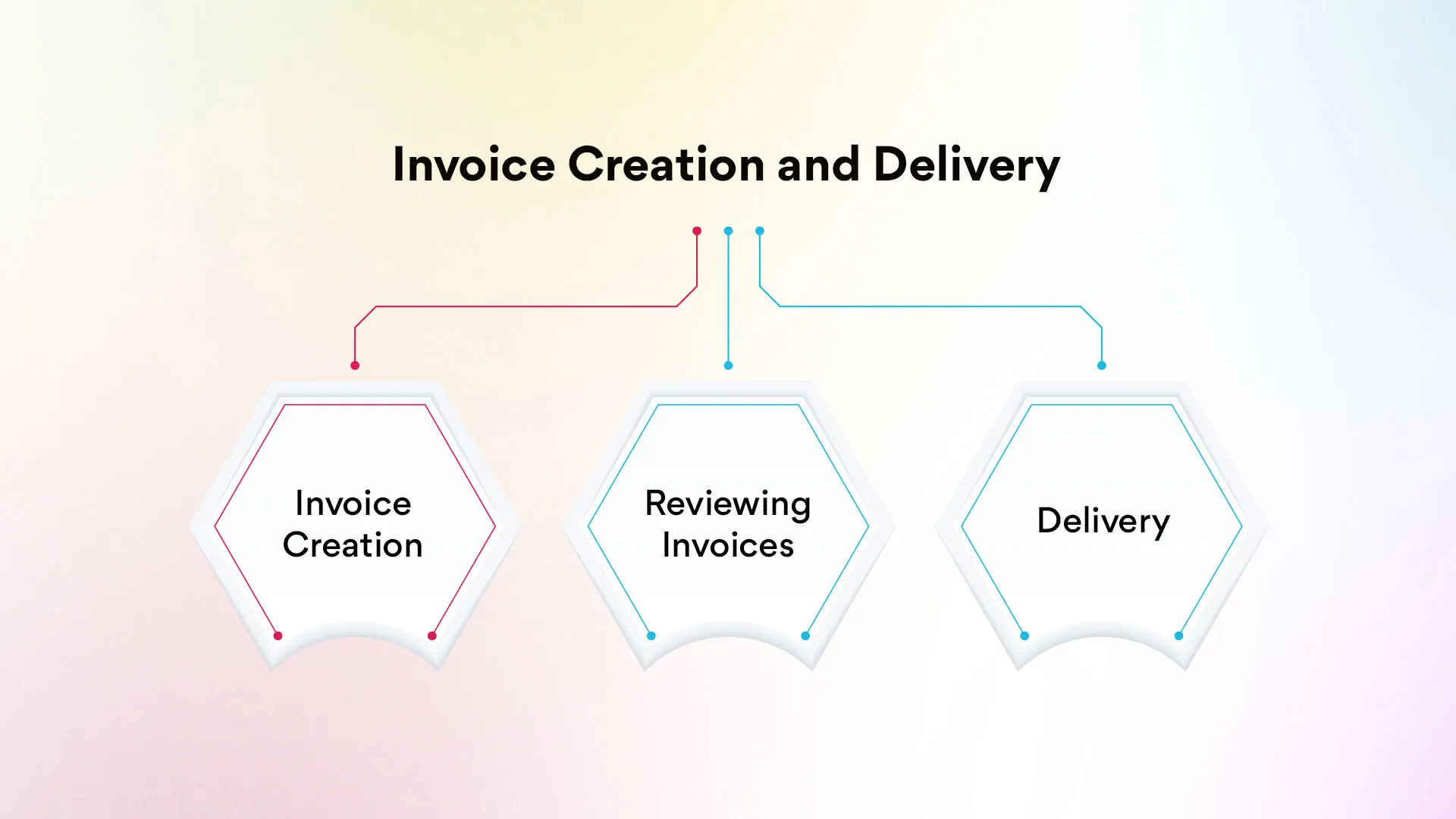
Accurate invoicing is crucial for eliminating disputes and ensuring prompt payments. The process entails generating, validating, and presenting invoices to customers.
- Invoice Creation: Standardized templates provide all required invoice details, such as due payment date, payment terms, and payment methods.
- Clearly defined payment terms and credit terms help customers know what to do.
- Reviewing Invoices: Verify that the amounts are accurate and that no information is missing.
- Accurate invoices reduce the potential for disagreements and facilitate smooth payment processing.
- Delivery: Prompt electronic mail delivery of invoices ensures faster customer access. Electronic invoices also reduce the risk of slower processing times involved in manual delivery methods.
How Accounting Software Helps:
- Automates the invoicing process, ensuring that invoices are accurate and error-free.
- Supports electronic invoices to reduce delays associated with manual delivery methods.
- Provides customizable templates to align with specific business needs.
3. Sending Payment Reminders
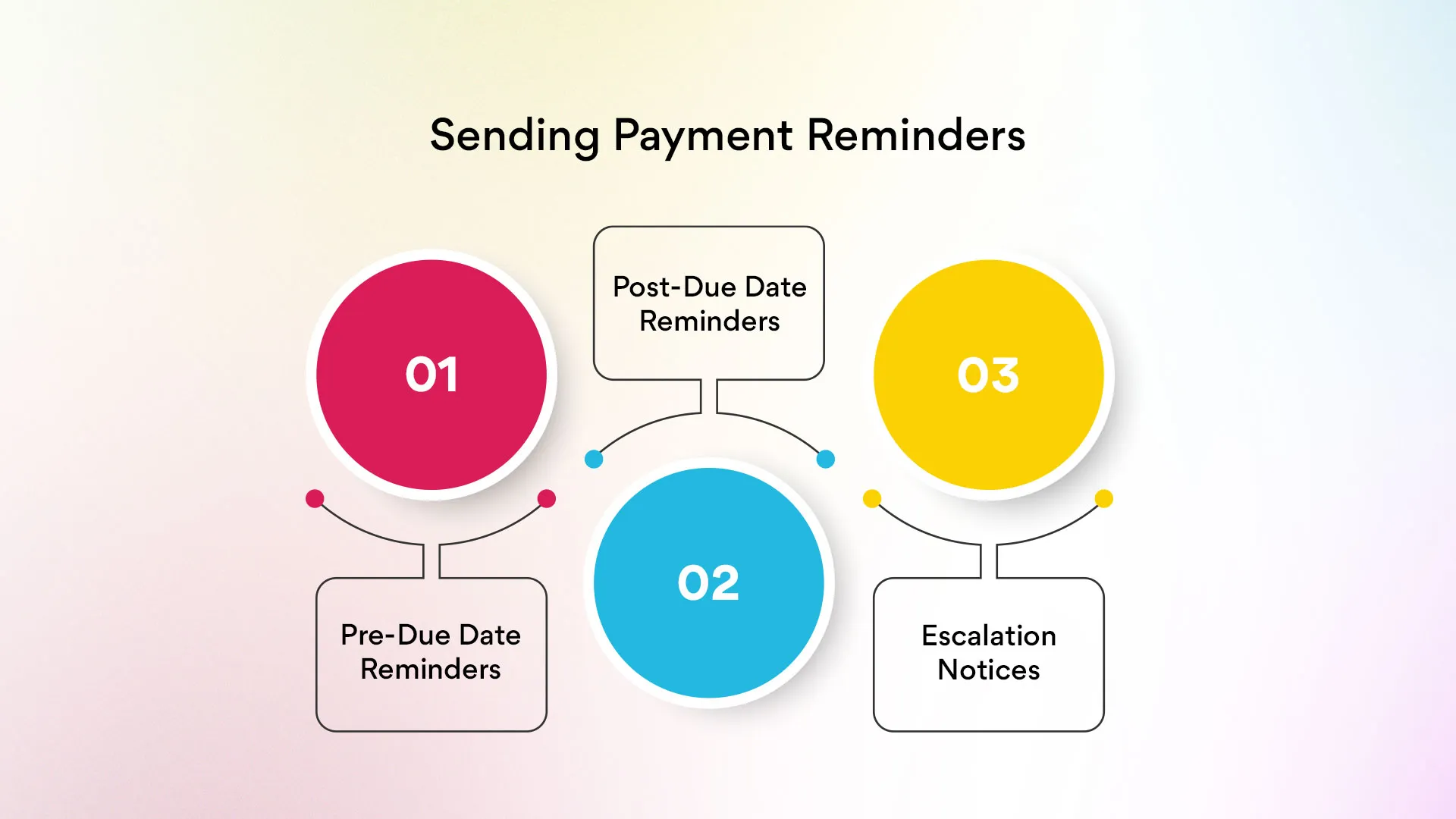
Gentle reminders of overdue invoices are essential for timely payment and facilitating customer relationships. In this stage, the process is defined by sending notifications before and after the predefined due dates.
- Pre-Due Date Reminders: Alert customers of imminent due dates to encourage prompt payments.
- These reminders improve payment history and reduce the number of days delinquent.
- Timely follow-ups are key to an efficient accounts receivable collection process, ensuring overdue invoices don’t pile up.
- Prompt reminders minimize outstanding payments and the risk of unpaid invoices.
- Escalation Notices: Consistently send reminders to unpaid accounts after multiple attempts.
- Escalation efforts may involve mentioning potential collection agency involvement. For instance, you can send more substantial reminders.
How Accounting Software Helps
- Automates the scheduling and sending of payment reminders, saving time for your receivable team.
- Tracks customer payment history to tailor reminders based on past behaviors.
- Provides templates for both soft and firm reminders to suit different scenarios.
4. Tracking Payment Status
Monitoring incoming payments provides a means to maintain accurate financial records and enables businesses to spot late payments.
- Monitor Payments: Track when payments are received and applied. This ensures the accuracy of financial statements and trial balance records.
- Identify Late Payments: Highlight accounts with overdue payments for immediate action. Monitoring days delinquent ensures faster collection efforts.
- Reconcile Payments: Match incoming payments to the correct invoices. Payment reconciliation is critical for maintaining accurate receivable balances.
How Accounting Software Helps:
- Offers real-time updates on payment status, providing instant visibility into incoming payments.
- Highlights overdue accounts and assists in prioritizing collection efforts.
- Reduces errors in reconciliation by automating the matching process.
5. Managing Overdue Payments
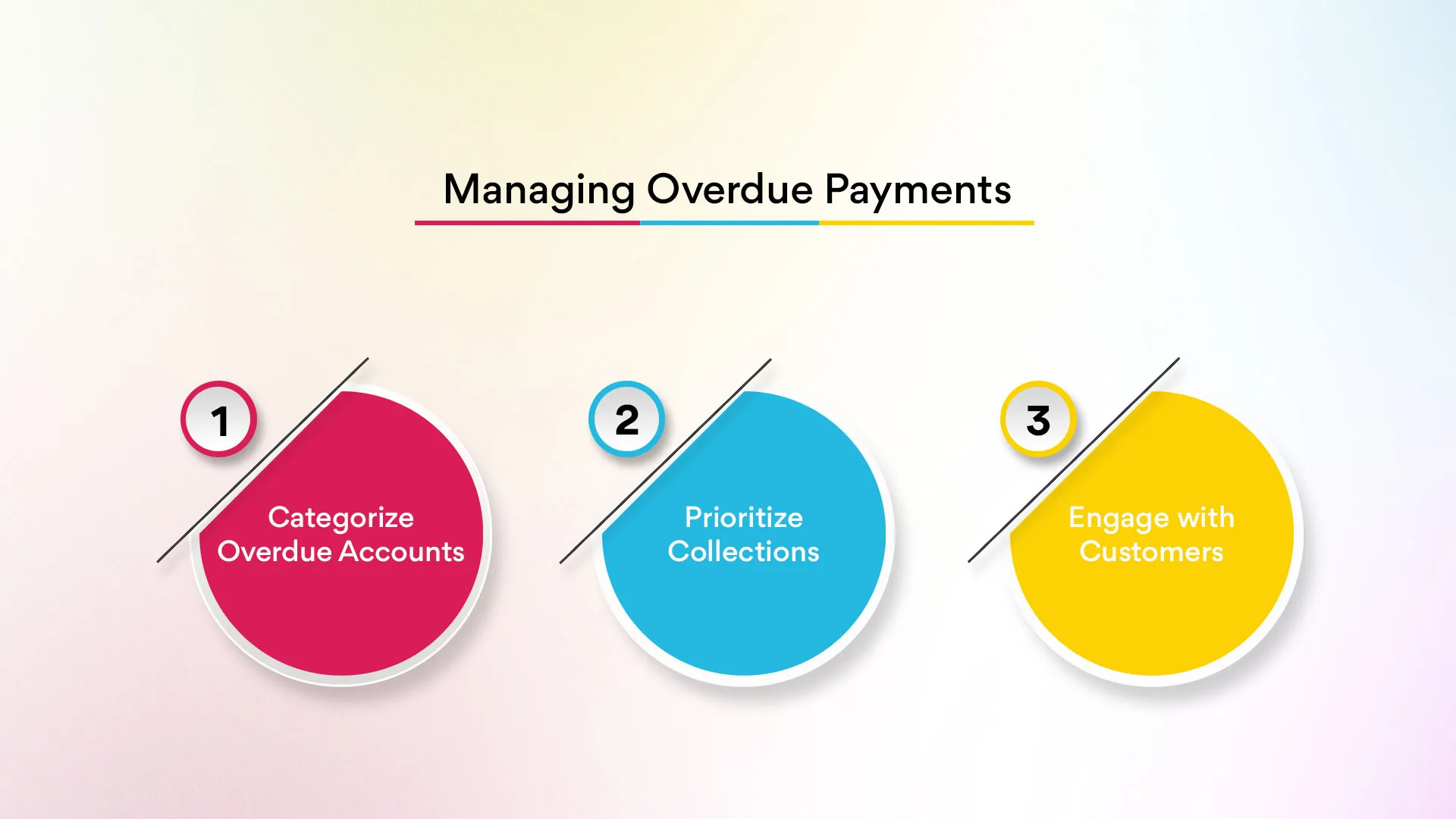
Despite best efforts, overdue payments can occur. Efficient management ensures these do not turn into bad debt.
- Categorize Overdue Accounts: Group accounts by days delinquent (e.g., 31-60 days, 61-90 days).
- Prioritize Collections: Focus on higher-value accounts or those nearing critical thresholds.
- Early identification and prioritization of overdue invoices increases collection process efficiency.
- Engage with Customers: Use a collaborative approach to address payment challenges.
- This leads to good customer relationships and, therefore, to rapid payment.
How Accounting Software Helps
- Provides advanced analytics to categorize overdue accounts and identify patterns in payment delays.
- Offers insights into customer payment history to craft effective collection strategies.
- Supports integration with collection agencies for more challenging accounts.
6. Implementing a Collection Process
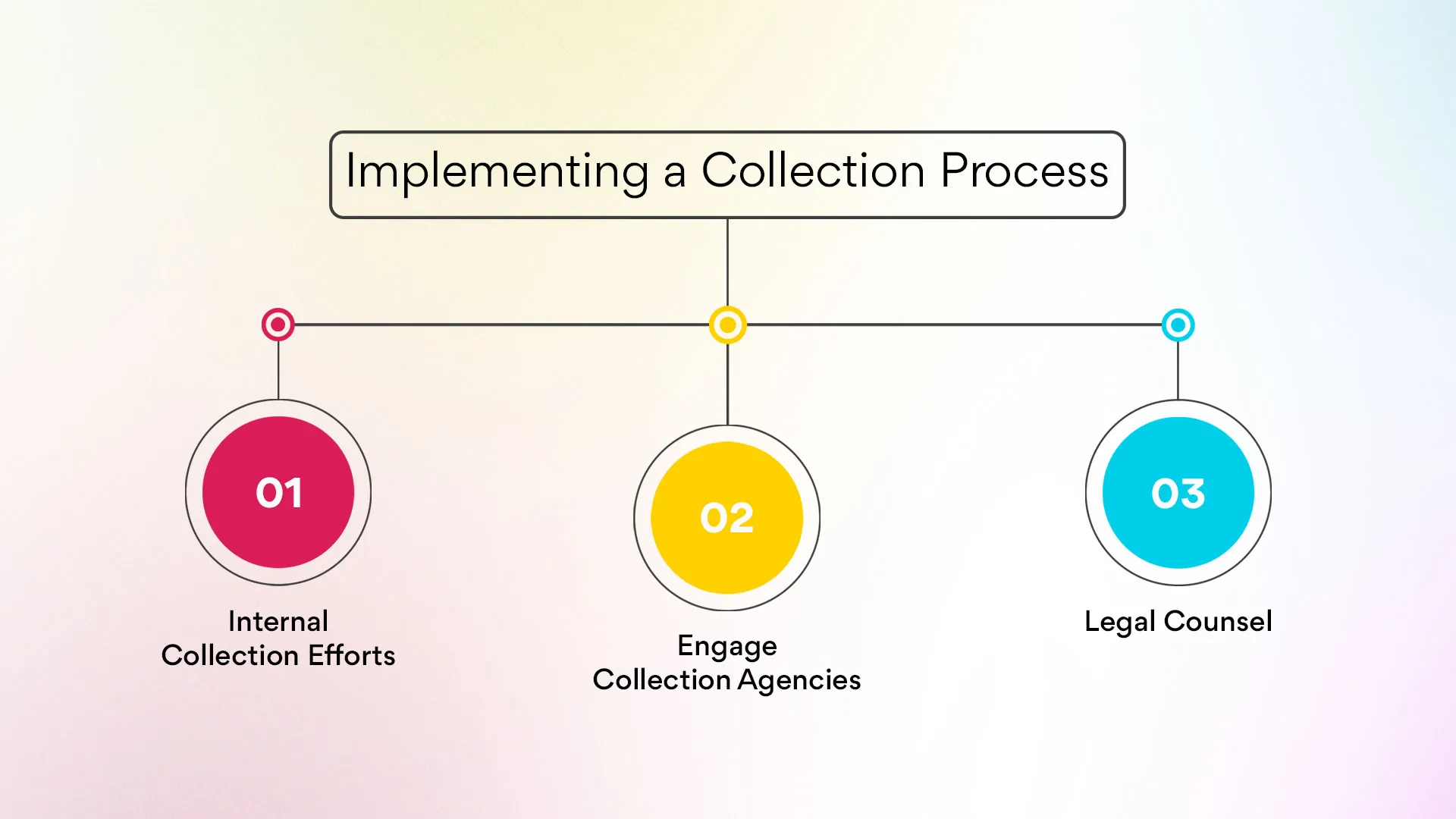
Businesses may need to escalate to a structured collection process for accounts with significant outstanding payments.
- Internal Collection Efforts: Send final notices and offer payment options. These efforts should align with agreed-upon terms and credit policies.
- Engage Collection Agencies: Outsource to professionals for persistent non-payers. This step ensures that critical metrics, like days sales outstanding, remain under control.
- Legal Counsel: Consult legal experts for cases involving disputed payments. Addressing disputes effectively protects the business from potential legal complications.
How Accounting Software Helps:
- Tracks collection efforts, ensuring no steps are missed during escalation.
- Maintains a detailed history of customer interactions to support legal or agency processes.
- Accounting software helps calculate the cost-effectiveness of engaging external collection services.
7. Reconciling Accounts
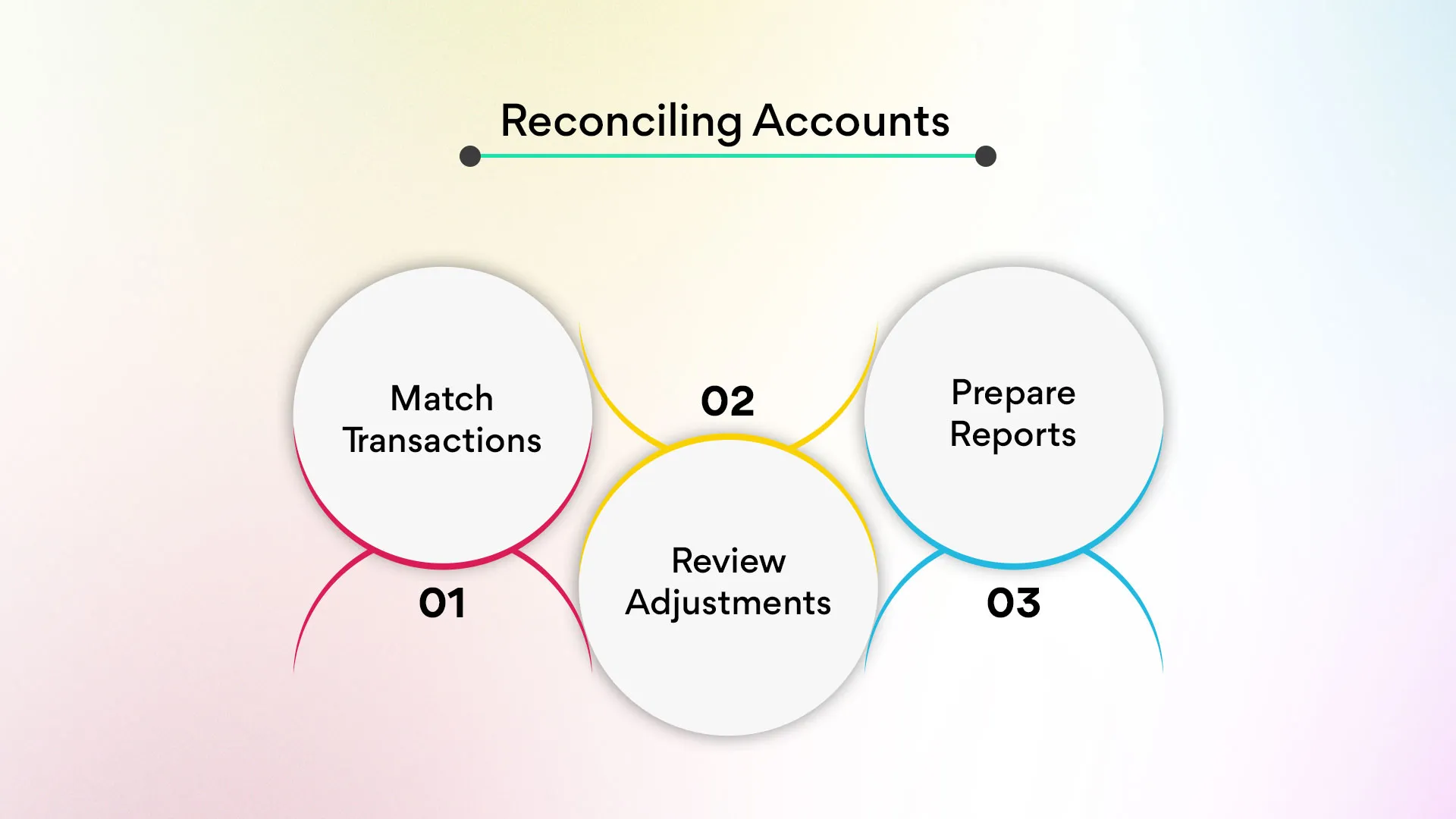
The month-end close process involves reconciling accounts to ensure all individual transactions and journal entries are accurate.
- Match Transactions: Reconcile bank records with accounts receivable entries.
- Review Adjustments: Identify and correct discrepancies in financial statements.
- Prepare Reports: Generate reports for management review and financial planning.
How Accounting Software Helps:
- Automates reconciliation processes using automated systems, reducing manual workload and human error.
- Ensures accuracy in financial statements by highlighting inconsistencies.
- Speeds up the month-end close process, freeing time for strategic tasks.
8. Generating Reports and Insights
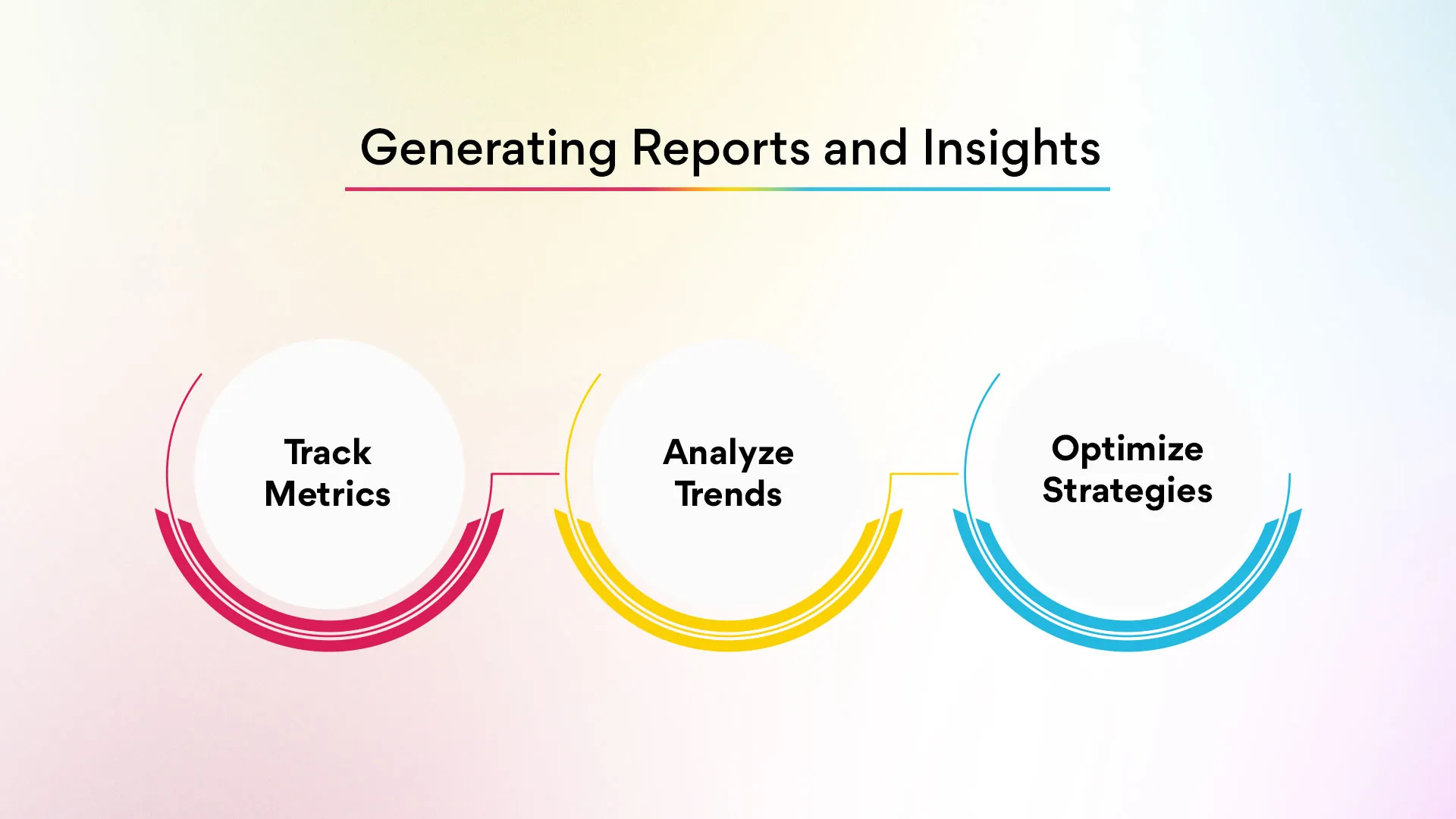
Real-time reporting and high-level analysis are key to tracking critical financial metrics such as receivable turnover ratio and days sales outstanding (DSO).
- Monitor critical metrics, such as DSO and receivable turnover, to assess accounts receivable performance within your Enterprise Resource Planning (ERP) system.
- Analyze Trends: Using historical data, identify patterns and predict future cash flow.
- Optimize Strategies: Adjust credit policies and payment terms based on insights.
How Accounting Software Helps:
- Offers real-time analytics and dashboards to monitor the receivable metrics, including the accounts receivable turnover ratio.
- Provides comprehensive reports that ease financial planning and decision-making.
- Provides practical information to help businesses improve cash flow and minimize bad debt.
Benefits of Using Accounting Software for Accounts Receivable Management
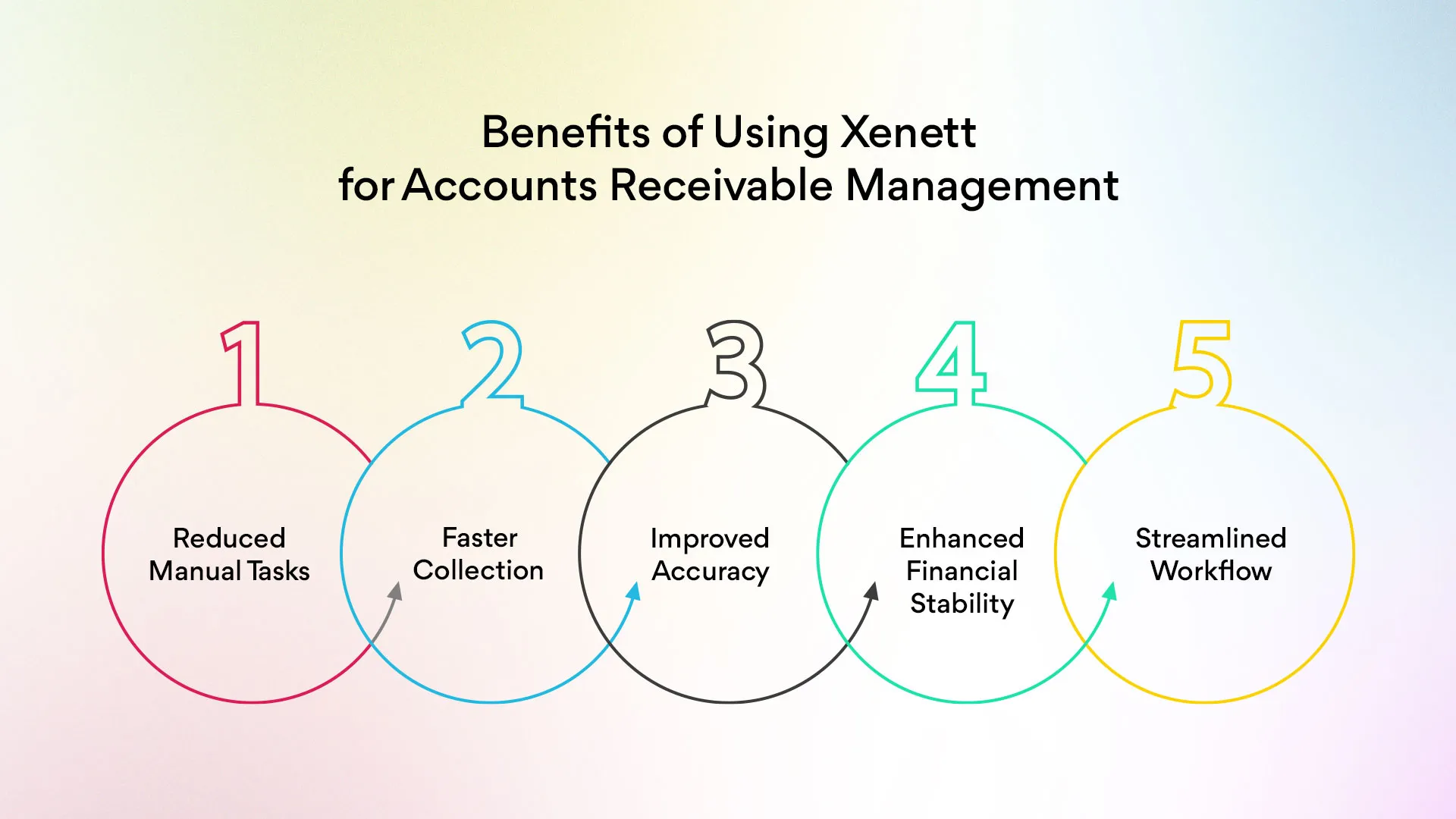
- Reduced Manual Tasks
No more wasting hours typing up invoices or setting endless reminders. Automation takes care of the boring stuff so your team can focus on things that actually matter (like strategy or maybe lunch). - Faster Collection
Send invoices early, set up online payments, even accept a credit card all of this nudges customers to pay faster. The result? A smoother collections process and way fewer awkward “just following up…” emails. - Improved Accuracy
With automated records, you don’t have to worry about typos or mismatched payments. Fewer errors mean happier customers and cleaner books. Plus, when you pull an aging report, you can trust the numbers instead of second-guessing them. - Enhanced Financial Stability
Since receivables are a current asset, managing them well keeps cash flow steady. That means less bad debt piling up and more room for investments that actually grow the business. - Streamlined Workflow
By letting automation handle repetitive tasks, your receivables team can focus on the bigger picture like solving disputes or improving credit policies instead of drowning in spreadsheets.
Accounts Receivable Process Improvement Ideas
Improving your accounts receivable process can have a direct impact on cash flow, efficiency, and overall financial health. Key ideas include
- Set Clear Credit Policies
It’s one of the classic accounts receivable collections best practices that saves you a ton of back-and-forth. - It’s one of the classic accounts receivable collections best practices that saves you a ton of back-and-forth.
- Send Invoices Quickly and Accurately
The sooner an invoice hits your customer’s inbox, the sooner it gets paid. - Delays in invoicing = delays in cash. And when those invoices are correct the first time, the collections process goes much smoother.
- Use Technology to Automate
Automation takes care of reminders, reconciliations, and tracking overdue accounts. Advanced robotic process automation accounts receivable solutions can handle these tasks efficiently - That way, your team spends less time chasing payments and more time actually strengthening customer relationships.
- Monitor with Reports
An aging report (yep, the one that shows how old unpaid invoices are) helps you spot trouble early. - Combine that with metrics like DSO, and suddenly you’re running collections like a pro.
- Keep an Eye on Credit Risk
Not all sales are good sales. Extending credit to the wrong customer can turn a shiny current asset into a write-off. - Regular reviews of your balance sheet and payment histories help reduce that risk.
At the end of the day, if you want to truly improve the accounts receivable process, it comes down to setting clear rules, automating wherever possible, and keeping close track of who owes what.
Manage it well, and receivables turn from a stress point into a steady stream of cash flow...starting right from the sales order all the way to final payment.
Key Metrics to Monitor with Accounting Software
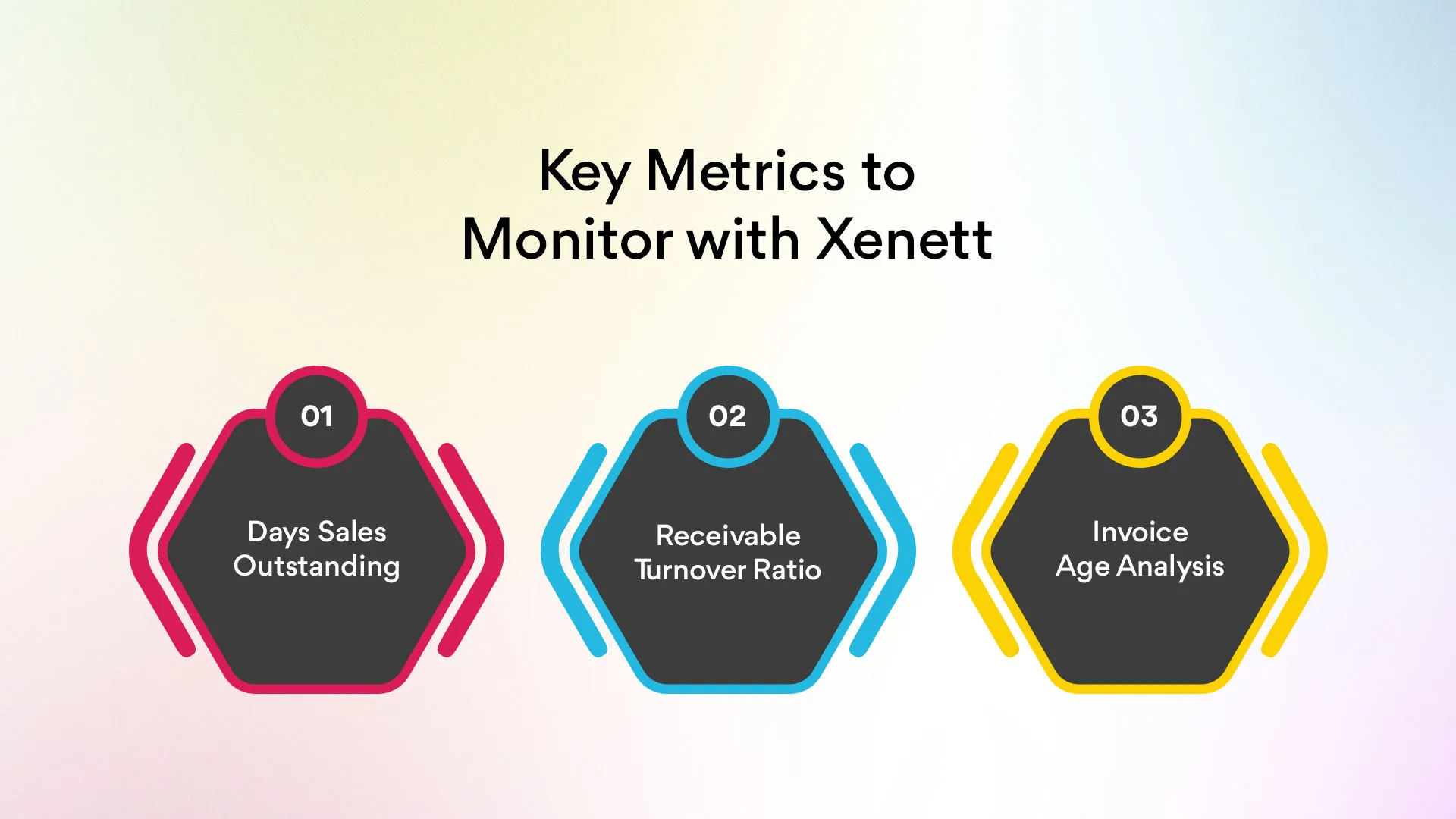
- Days Sales Outstanding (DSO)
This tells you how long it actually takes to get paid after making a sale. Lower DSO = faster payment processing and happier cash flow. - Receivable Turnover Ratio
Automation helps speed up accounts receivable collection, making cash flow smoother and reducing manual effort. A higher ratio means your business is efficient at collecting what’s owed instead of letting money sit out there gathering dust. - Invoice Age Analysis
Here’s where the aging report comes in. It breaks down overdue invoices into buckets like 31–60 days or 61–90 days, so you instantly know which customers are dragging their feet.
When it comes to receivables, it’s not just about sending invoices… it’s about how you manage accounts receivable efficiently to protect cash flow.
These metrics don’t just protect cash flow; they also shape the overall Customer Experience.
Conclusion
Successful accounts receivable management is the backbone of healthy cash flow.
It helps minimize bad debt, improves working capital, and strengthens long-term customer relationships.
When businesses establish a structured process...from credit applications to reconciliation and reporting...they not only protect their finances but also keep their General Ledger accurate and reliable.
That said, handling all of this manually can quickly overwhelm even the best AR Teams.
It’s time-consuming, prone to errors, and often slows down collections, whether you’re tracking overdue invoices or processing wire transfers.
This is where automation software makes all the difference.
By automating these repetitive tasks, we can save time, reduce errors, and make collections faster. AR automation tools can really make a difference here.
Even better, automation tools enhance Customer Experience by simplifying invoicing, sending timely reminders, and offering flexible payment options...all of which boost customer satisfaction.
At the end of the day, leveraging modern software doesn’t just mean faster collections.
It empowers your AR team to shift focus toward high-value activities that fuel growth while ensuring your receivables remain a strong and reliable current asset on the balance sheet.
In short: automate the busywork, trust the data, and let your receivables process fuel growth instead of slowing it down.

.svg)







